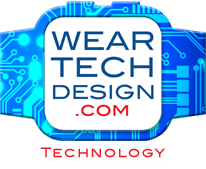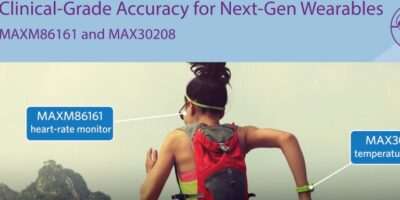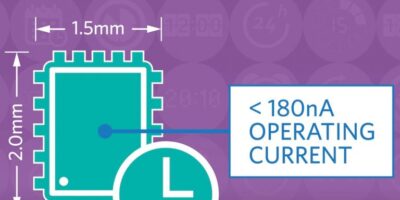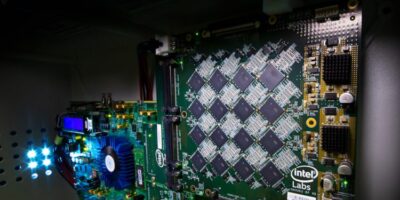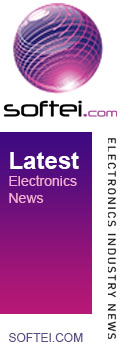Increased system battery life is assured with the Bosch smart BMI270 inertial measurement unit (IMU). It is intended for wearable and hearable applications and is available from Rutronik UK.
ICs & Semiconductors
Listen to your heart with wearable sensor
Small, low power healthcare sensors from Maxim Integrated enable new wearable health and fitness use cases at half the power, says the company.
Real-time clock extends battery life for wearables
The battery life of space-constrained systems such as wearables, medical monitors, point-of-sale (PoS) equipment and portable terminals can be extended, says Maxim Integrated, using the MAX31341B.
Research indicates Pohoiki Beach chip for neural-inspired algortithms
An eight million neuron system, comprised of 64 Phokiki Beach chips, the codename for Loihi chips, is now available to the research community. The neuromorphic system will allow researchers to experiment with Lohi, Intel’s brain-inspired research chip, which applies the principles found in biological brains to computer architectures. Loihi enables users to process information up to 1,000 times faster and 10,000 times more efficiently than CPUs for specialised applications like sparse coding, graph search and constraint-satisfaction problems.
About Weartech
This news story is brought to you by weartechdesign.com, the specialist site dedicated to delivering information about what’s new in the wearable electronics industry, with daily news updates, new products and industry news. To stay up-to-date, register to receive our weekly newsletters and keep yourself informed on the latest technology news and new products from around the globe. Simply click this link to register here: weartechdesign.com
